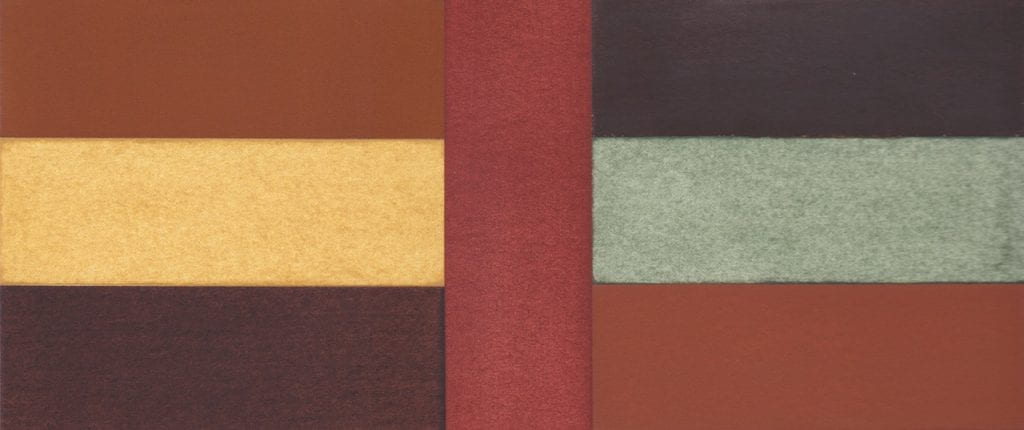A Colour A Day: Week 23
By Ruth Siddall, on 29 August 2020
A Colour A Day Week 23. 24th August – 30th August.
Jo Volley writes…
This week we celebrate Goethe’s 271st birthday, 28th August, with earth pigments from Cyprus collected and processed by Ruth Siddall who says of them …
‘Cyprus is an island long associated with the production of pigments. These are by-products of the copper mining that has been active since the Bronze Age when Cyprus was the main supplier of copper ingots in the eastern Mediterranean region. But it was not copper-based pigments that were in abundance, it was the iron and manganese-rich ochres and umbers which were typical of Cyprus as well as the celadonite-rich green earth deposits. The Cypriot umber is a true umber in the geological sense having formed at a mid-ocean ridge plate tectonic boundary. In fact this is the environment of deposition of all of Cyprus’s ores and pigments. They originally formed in deep ocean waters, superheated by volcanic activity and then this slab of oceanic rock, ores and all, was emplaced onto the Eurasian continent during the construction of the Alpine mountain chain. The ochres formed by the weathering of the ores both before and after this emplacement onto dry land. Such a geological environment is uncommon, and Cyprus is by far the biggest example of these processes on Earth. A unique island for pigment formation.’
All pigments are bound in gum Arabic on W&N watercolour paper and read;
Left hand column from top to bottom:
Yellow Ochre, Sia Mine, Cyprus
Jarosite Yellow Ochre, Sia Mine, Cyprus
Burnt Umber, Margi, Cyprus
Middle column:
Red Ochre, Sia Mine, Cyprus
Right hand column from top to bottom:
Raw Umber, Margi, Cyprus
Terra Verte, Cyprus
Brown Ochre, Sia Mine, Cyprus

 Close
Close


